Appointed county surveyor in 1824, William Owen was the driving force behind the improvements made in Haverfordwest in the early 19th century. The son of a local cabinet maker, Owen designed the (former) shire hall, almost opposite Wilton House. He was also responsible for the New Bridge over the River Cleddau at the foot of High Street and the adjoining Victoria Place. Owen was four times mayor of Haverfordwest.
Text about the history of Haverfordwest.

The text reads: Haverfordwest began as a settlement by a ford over the River Cleddau. The town’s recorded history dates from c1110, when Richard FitzTancred built the first castle here. By 1220 the town had grown up around the fortress.
Haverfordwest was one of the largest medieval towns in Wales, spreading up the hill to the area around St Mary’s Church. Many of today’s town centre streets were well established by the 14th century.
By then the castle had been rebuilt by Queen Eleanor of Castile. The town was also partly walled, with five gates. In 1577 Haverfordwest Castle was described as “utterlie decayed”. A prison was later built within its walls, which was replaced in 1820 and closed in 1878
A photograph and text about Augustus John.
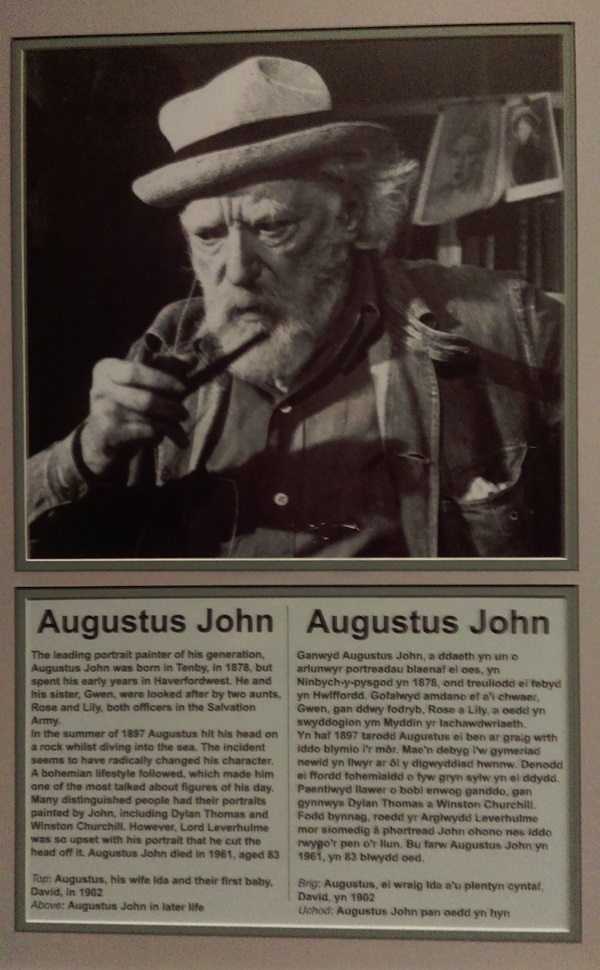
The text reads: The leading portrait painter of his generation, Augustus John was born in Tenby, in 1878, but spent his early years in Haverfordwest. He and his sister, Gwen, were looked after by two aunts, Rose and Lily, both officers in the Salvation Army.
In the summer of 1897 Augustus hit his head on a rock whilst diving into the sea. The incident seems to have radically changed his character. A bohemian lifestyle followed, which made him one of the most talked about figures of his day. Many distinguished people had their portraits painted by John, including Dylan Thomas and Winston Churchill. However, Lord Leverhulme was so upset with his portrait that he cut the head off it. Augustus John died in 1961, aged 83.
Top: Augustus, his wife Ida and their first baby, David, in 1902
Above: Augustus John in later life.
Text about Gwen John, and a copy of her work.
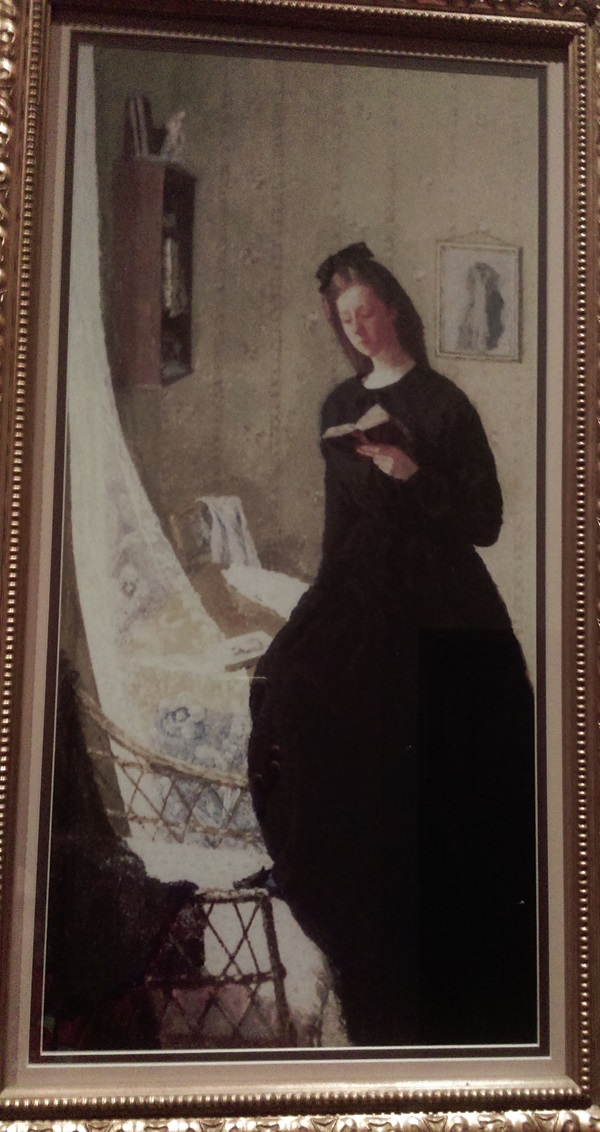
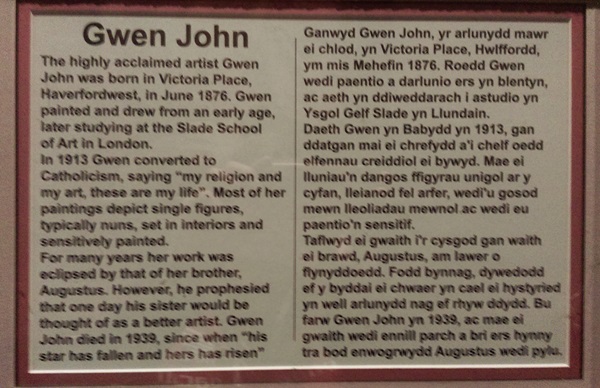
The text reads: The highly acclaimed artist Gwen John was born in Victoria Place, Haverfordwest, in June 1876. Gwen painted and drew from an early age, later studying at the Slade School of Art in London.
In 1913 Gwen converted to Catholicism, saying “my religion and my art, these are my life”. Most of her paintings depict single figures, typically nuns, set in interiors and sensitively painted.
For many years her work was eclipsed by that of her brother, Augustus. However, he prophesied that one day his sister would be thought of as a better artist. Gwen John died in 1939, since when “his star has fallen and hers has risen”
Illustrations, prints and text about Admiral Foley.

The text reads: Admiral Sir Thomas Foley served with Lord Horatio at the Battle of Cape St Vincent, fought off the coast of Portugal in 1797, and at the Battle of Copenhagen in 1801.
The two friends were awarded the Freedom of Haverfordwest in 1802, at a ceremony held in Foley House, Goat Street. The house belonged to Foley’s brother, Richard, and was designed by the celebrated architect John Nash.
Foley House was purchased by Pembrokeshire County Council in the late 1950s. It was later converted for use as offices.
Top: Foley House
Left: Sir Thomas Foley
Above: left, Foley at the time of the Battle of St Vincent, 1797; right, Nelson before the Battle of Trafalgar.
A photograph, print and text about Graham Sutherland.

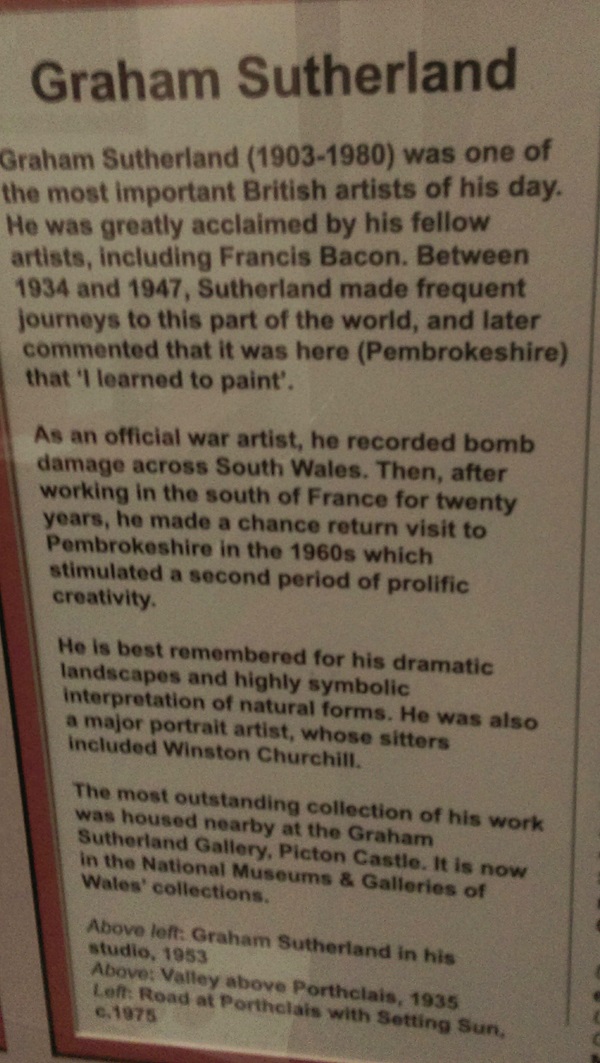
The text reads: Graham Sutherland (1903-80) was one of the most important British artists of his day. He was greatly acclaimed by his fellow artists, including Francis Bacon. Between 1934 and 1947, Sutherland made frequent journeys to this part of the world, and later commented that it was here (Pembrokeshire) that “I learned to paint”.
As an official war artist, he recorded bomb damage across South Wales. Then, after working in the south of France for twenty years, he made a chance return visit to Pembrokeshire in the 1960s which stimulated a second period of prolific creativity.
He is best remembered for his dramatic landscapes and highly symbolic interpretation of natural forms. He was also a major portrait artist, whose sitters included Winston Churchill.
The most outstanding collection of his work was housed nearby at the Graham Sutherland Gallery, Picton Castle. It is now in the National Museums and Galleries of Wales’ collections.
Above left: Graham Sutherland in his studio, 1953
Above: Valley above Porthclais, 1935.
External photograph of the building – main entrance.
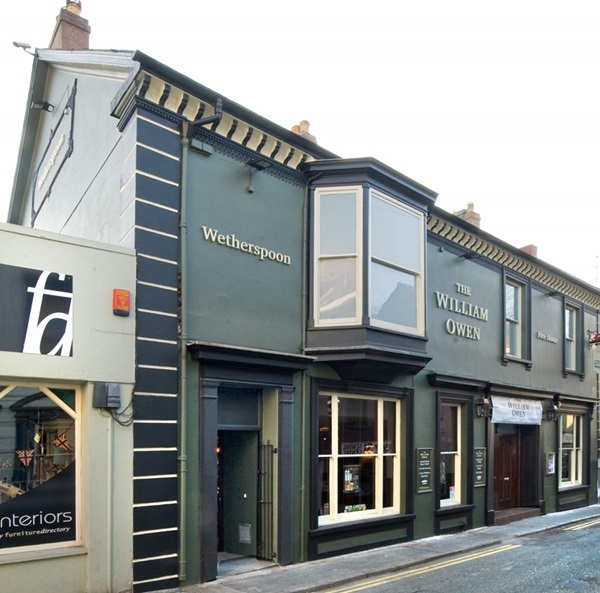
If you have information on the history of this pub, then we’d like you to share it with us. Please e-mail all information to: pubhistories@jdwetherspoon.co.uk